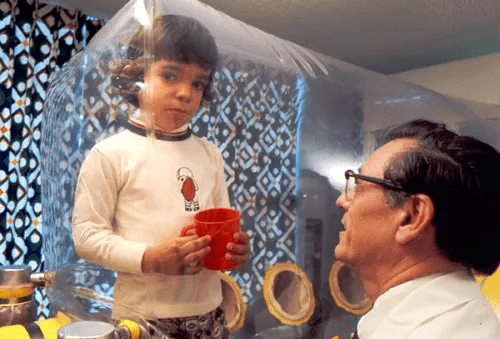Define the term 'pathogen'
An organism (living thing) or other biological agent that can cause disease.
Identify humanity's first antibiotic drug, developed by Alexander Fleming, Ernst Chain, and Howard Florey
Penicillin
To prevent pathogens from entering the body
Which type of pathogen are antibiotics most effective in treating?
Bacterial infections
Describe changes enacted by Edwin Chadwick's Public Health Act, passed in England, 1848.
Any 3 of the following:
- Improved drainage and sewer provisions
- Provision of clean drinking water
- Placement of medical officers in each and every town
- Disposal and removal of waste from homes
Identify 3 components of the Second Line of Defence
Fever
Inflammation
Phagocytes
Describe the key characteristics of a parasite & give an example of one that can affect humans.
- Tape Worm
- Malaria
- Lice
- Leeches
- Mosquitoes
Explain how quarantining can lead to a decreased spread of disease.
Quarantining involves isolating or removing an infected person, corpse, or object away from the general public.
Eliminating close contact with infected persons/objects would reduce transmission of disease through direct contact.
Which type of barrier is saliva an example of?
Chemical
Stanley and Rayon are having an argument over prions and viruses.
Stanley argues that both pathogens are the same, as both prions and viruses can be considered as non-living things and both are microscopic.
Rayon disagrees, but is unsure of what to say in response.
Explain why Stanley is wrong in saying that prions and viruses are the same by comparing the key features of prions and viruses.
Prions are misfolded proteins, whereas viruses are DNA and RNA contained in a capsule.
Prion infections do not have any effective treatment or cure, whereas viral infections can be treated by antiviral medication.
Viruses can 'reproduce' by hijacking the machinery of a host cell to produce new viral particles, whereas Prions replicate by misfolding other pre-existing 'healthy' or 'regular' proteins around it.
Both have structural and functional differences and are therefore not the same.
Identify the strategy suggested by Ignaz Semmelweis to prevent pregnant women from dying from childbed fever (later identified as a bacterial infection) after childbirth.
Explain how this strategy would prevent infection and deaths in mothers.
Suggested Doctors/Surgeons wash their hands before assisting in any childbirths.
Washing your hands should mechanically and chemically eliminate any bacteria that may be present, preventing it from being transmitted to the mother during childbirth.
Explain how cilia prevent infections in areas such as the nasal cavity (nostrils).
Cilia can trap pathogens and use wave-like muscle movements to move pathogenic particles away from vulnerable areas.
Aspergillosis is a fungal infection caused by an excessive growth of the mould Aspergillus in the lungs.
Which mode/type of antifungal would be the least effective in treating it?
Ointment/topical creams
Explanation
Topical creams are applied onto fungal infections on the skin - Aspergillosis is located in the lungs.
Members of the general public can become uneasy, disturbed, and/or disgusted by the idea of vaccinations containing 'dead' or 'inactive' viral particles, leading them to take an anti-vaccination stance.
Explain how vaccinations work to be a proactive method of protection for the individual and the broader population.
The body's B Cells use these inactive/dead viral particles to produce antibodies for that virus, granting immunity without having to suffer from the illness itself.
Vaccinating large populations can prevent the virus from spreading through its members and protect those who are unvaccinated or vulnerable, as it is more difficult for the virus to infect a host.
David Vetter, AKA the 'Bubble Boy', was born with a disorder that resulted in a very low amount of functional white blood cells, particularly B Cells.

As a result, his entire life was spent inside a plastic bubble.
Which of David's Three Lines of Defence would be non-functional? Justify your response by giving a specific immune system function that David will be unable to perform.
Third Line of Defence, as B Cells are non-functional and David will be unable to produce any antibodies.